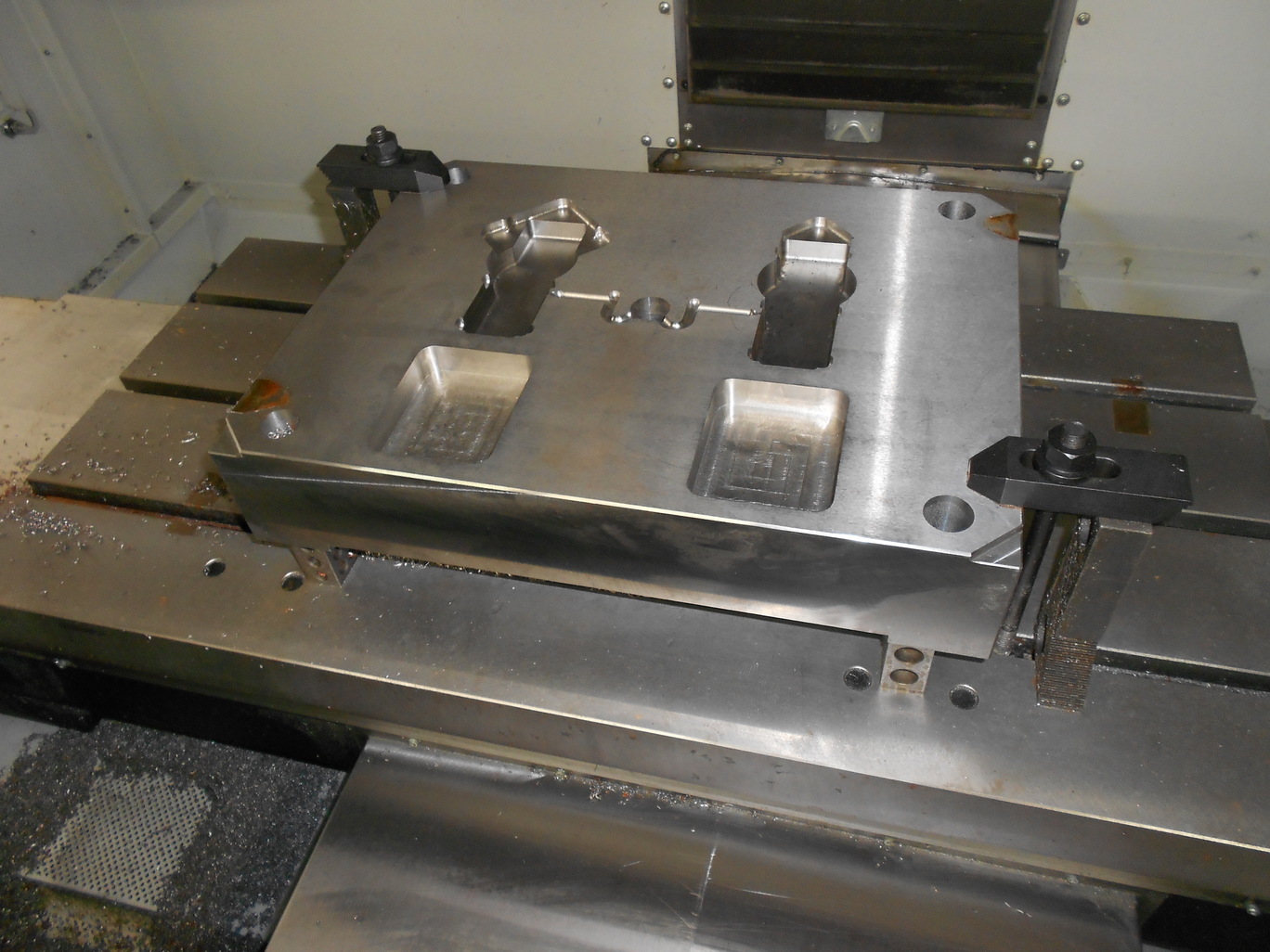Our process & work
Mold & Tool Building
Machining of a wood pattern to make a vacuum formed cover.
Wood patterns are a common material used to make vacuum form molds from. Wood is relatively inexpensive and allows the customer to make changes to the design easily. The number of samples that one is able to get from any pattern depends on the size of the part and the thickness of the material. Once the specifications of the part have been met, the pattern is then used to create a ceramic composite mold, or cast aluminum mold for regular production.

Mold & Tool Building
Beginning stages of a mold being machined.
Composite molds are a lower cost alternative to cast or machined aluminum molds. Composite molds are typically made from filled resins that start as a liquid and harden with time. Depending on the application, composite molds can last a very long time and produce high quality parts. Cast aluminum molds are cast at a foundry and typically have temperature control lines running through them. This helps to set the heat of the plastic being formed as well as speed up the fabrication process. Aluminum molds can be male or female in nature, and can also be used in pressure forming applications.
Machined aluminum molds are like cast aluminum, but are cut out of a solid block of aluminum using a CNC machine and a CAD program. Typically, machined aluminum is used for shallow draw parts out of thin gauge material. Applications may include packaging and trays
